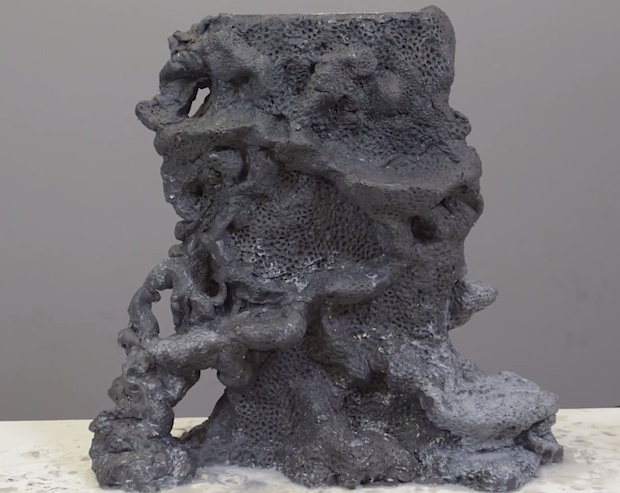Smooth-On has been making inroads into the aquarium hobby for some time now with innovative ways for aquarists to sculpt and create their own aquarium structures. But their newest effort to encourage full wraparound structure to cover an overflow box is their most ambitious and exciting yet.

The Smooth-On overflow cover kit consists of a two-part epoxy putty which comes in two large buckets, coupled with a special mixing powder, rubber stamps and fairly detailed instructions. The process of building your own Smooth-On overflow cover starts by creating a framework using three acrylic panels, although you could use two for corner overflows or a single one if you’re starting with a bent or curvy piece.

From there the just-mixed two part Smooth-On epoxy putty is applied heavily to cover the entire base. At this point the project looks like a big lumpy mess but Smooth-On’s selection of 25 optional silicone rubber stamps can be pressed into the base to create what truly looks like a coral skeleton relic. The process of mixing the two-part epoxy is repeated and the builder can then elect to create all manner of shelves and projections to get as much or as little relief from the base as is desired.

After about a day of curing the newly hardened epoxy putty overflow cover can then be cut, shaped and drilled to allow for any number of features including overflow drain teeth, plumbing access points and our personal favorite which hasn’t yet been highlighted, the inclusion of magnets or powerhead mounting points to ensure your flow device is secured.
The Smooth-On overflow cover project is a fairly involved one but if you like aquascaping with live rock, you might really love to try a hand at building your own custom overflow, and Smooth-On makes it easy with their instructional video. Having lamented about unsightly overflows for years this overflow cover project is an excellent opportunity to not only conceal an eye sore from the aquarium but also to create something inherently unique in the process. [Smooth-On]



